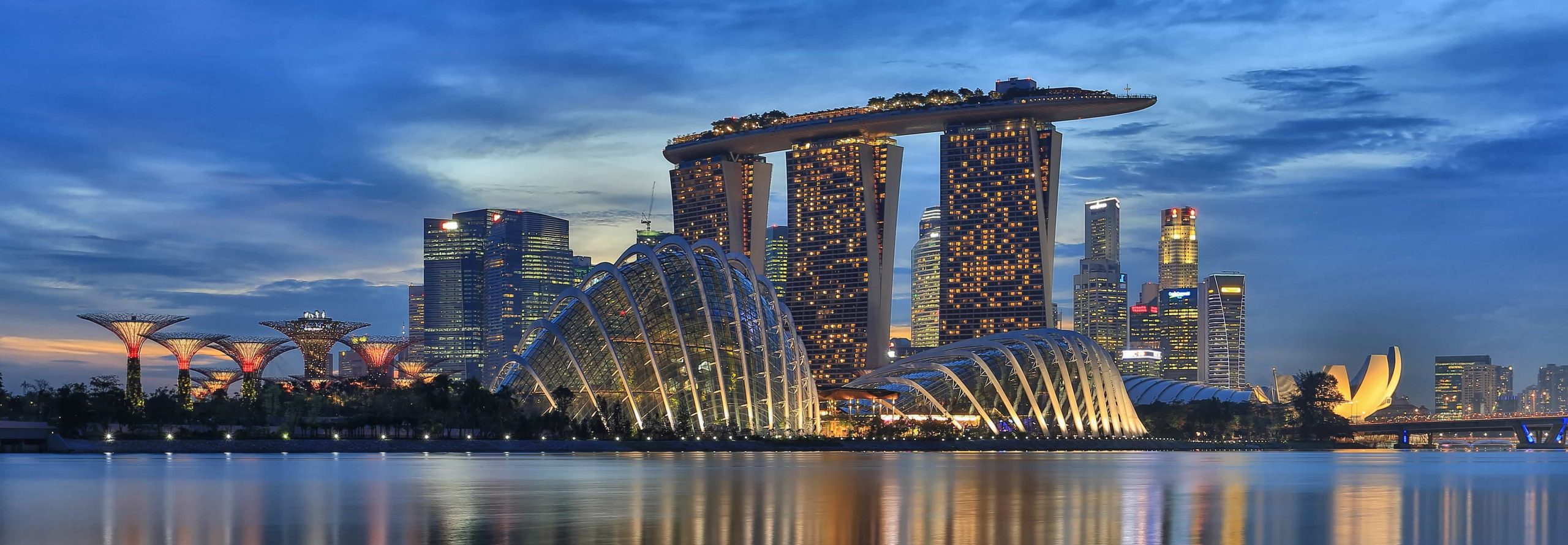
Singapore. The name conjures images of a hyper-modern metropolis, a concrete jungle where futuristic architecture pierces the clouds and lush, manicured gardens defy urban expectations. It’s known as a global financial hub, a culinary paradise, and a city of impeccable cleanliness and order. It is also, famously, known for being expensive.
But this reputation, while not entirely unfounded, often overshadows a crucial truth: Singapore can be an incredibly accessible and affordable destination. The key to unlocking this vibrant island nation without draining your bank account begins long before you taste your first chili crab or gaze up at a Supertree. It starts with the art of finding a cheap flight.
This comprehensive guide will not only show you how to snag that budget-friendly ticket but will also equip you with the knowledge to explore Singapore’s top attractions, understand its rich history, and navigate its streets like a local, all while keeping your wallet happy.

Related Articles about The Ultimate Guide to Finding Cheap Flights to Singapore: Your Gateway to the Lion City:
- Edinburgh: A City of Castles, Culture, and Timeless Charm
- Vietnam on a Shoestring: Your Comprehensive Guide to Affordable Adventures
- The Netherlands: A Comprehensive Guide to Exploring the Land of Canals and Windmills
- Sun, Sand, and Salsa: Your Ultimate Guide to Miami
- Manchester: A City of Grit, Glamour, and Groundbreaking Culture
The Art of Finding Cheap Flights to Singapore
Securing an affordable flight is the first and most significant victory in planning a budget trip. Singapore’s Changi Airport (SIN) is one of the world’s busiest and best-connected hubs, which means competition among airlines is fierce—a major advantage for savvy travellers.
1. Be a Master of Timing:
The single biggest factor influencing flight prices is timing. Singapore’s tropical climate means it’s warm year-round, but tourist seasons still dictate costs.
- Peak Seasons: Avoid booking during major holidays like Chinese New Year (January/February), the Christmas and New Year period (December), and the summer school holidays (June-August). Prices for flights and accommodation skyrocket during these times.
- The Sweet Spot (Shoulder Seasons): The best times to find cheaper flights are typically from February to April and September to November. These months fall between major holiday rushes, offering a pleasant balance of good weather, fewer crowds, and more competitive airfares.
2. Embrace the Comparison Game:

Don’t book the first flight you see. Use powerful flight comparison tools to do the heavy lifting for you.
- Websites: Skyscanner, Google Flights, and Momondo are your best friends. Use their flexible date features, such as the "whole month" or "cheapest month" view, to pinpoint the most affordable days to travel.
- Set Price Alerts: If you have specific dates in mind, set up price alerts. These services will email you when the price of your chosen route drops, allowing you to book at the optimal moment.
3. Consider Budget Airlines and Indirect Routes:
Direct flights offer convenience, but they often come with a premium price tag.
- Budget Carriers: For regional travel within Asia, airlines like Scoot (Singapore Airlines’ budget arm), AirAsia, and Jetstar offer incredibly cheap fares. Be mindful of their à la carte pricing model—you’ll pay extra for checked baggage, meals, and seat selection.
- Fly Indirect: For long-haul flights from Europe or North America, a one-stop itinerary can save you hundreds of dollars. Layovers in Middle Eastern hubs (like Dubai or Doha) or other major Asian cities (like Bangkok or Kuala Lumpur) can significantly cut costs.
4. Book in the Golden Window:
Conventional wisdom suggests booking international flights 2-4 months in advance for the best prices. Last-minute deals are rare for long-haul journeys, and booking too far in advance (6+ months) can sometimes mean paying a higher, preliminary price before airlines adjust their fares based on demand.
A Glimpse into the Lion City’s History
Once you’ve landed, understanding Singapore’s story will enrich your experience. Its journey from a humble fishing village to a global powerhouse is nothing short of remarkable. According to legend, a Sumatran prince named Sang Nila Utama landed on the island in the 14th century, saw a majestic creature he believed to be a lion, and named the settlement "Singapura," meaning "Lion City."
The city’s modern history began in 1819 when Sir Stamford Raffles of the British East India Company established a trading post. Its strategic location at the crossroads of major shipping lanes propelled its growth. The 20th century brought the turmoil of World War II and a harrowing Japanese occupation, followed by a brief merger with Malaysia. In 1965, Singapore became a fully independent republic. Facing immense challenges, including a lack of natural resources, it embarked on an ambitious path of industrialization and development that transformed it into the first-world nation it is today. This history is visible everywhere, from the colonial architecture of the Civic District to the multicultural fabric of its distinct ethnic neighbourhoods.
Exploring Singapore’s Top Attractions
Singapore masterfully blends the natural with the man-made. Many of its most iconic sights can be enjoyed for free or at a low cost.
- Gardens by the Bay: This futuristic park is a must-see. While entry to the Cloud Forest and Flower Dome conservatories requires a ticket, wandering through the Supertree Grove is free. Don’t miss the spectacular Garden Rhapsody light and sound show, which takes place for free every evening.
- Marina Bay Sands & Merlion Park: You don’t need to be a hotel guest to appreciate the iconic Marina Bay Sands. For the best free view and the quintessential Singapore photo, head across the bay to Merlion Park. Here, you can capture the mythical half-lion, half-fish statue with the stunning hotel skyline in the background.
- Cultural Enclaves: Dive into Singapore’s multicultural soul by exploring its historic neighbourhoods.
- Chinatown: Visit the majestic Buddha Tooth Relic Temple (free entry) and browse the bustling street markets.
- Little India: Immerse yourself in the vibrant colours, sounds, and scents. The intricate Sri Veeramakaliamman Temple is a feast for the eyes.
- Kampong Glam: Discover the heart of the Malay community, centred around the golden-domed Sultan Mosque and the trendy, boutique-lined Haji Lane.
- Singapore Botanic Gardens: A UNESCO World Heritage Site, this lush oasis offers a tranquil escape from the city buzz. Entry to the main gardens is free. A small fee is required for the National Orchid Garden, but it’s well worth it to see the world’s largest orchid display.
- The Jewel Changi Airport: Don’t rush out of the airport upon arrival. The Jewel is an attraction in itself, home to the world’s tallest indoor waterfall, the HSBC Rain Vortex. Watching the water cascade through the glass dome is a breathtaking and completely free experience.
Getting Around: Transportation on a Budget
Singapore boasts one of the world’s most efficient, clean, and affordable public transportation systems. There is rarely a need for expensive taxis.
- The MRT (Mass Rapid Transit): This is the backbone of the city’s transport network. The extensive train system connects virtually every corner of the island. It’s air-conditioned, punctual, and incredibly easy to navigate.
- EZ-Link Card vs. Singapore Tourist Pass: For most travellers, purchasing an EZ-Link card is the best option. It’s a rechargeable tap-and-go card that can be used on both the MRT and public buses. Fares are significantly cheaper than paying for single-trip tickets. Alternatively, the Singapore Tourist Pass offers unlimited travel for one, two, or three days. It’s a great value if you plan on doing a lot of sightseeing in a short period.
- Buses: The public bus system is equally efficient and offers a more scenic way to see the city. Your EZ-Link card or Tourist Pass works here, too.
Where to Stay Without Breaking the Bank
Accommodation is often the second-largest expense after flights, but Singapore offers a range of budget-friendly options.
- Hostels: Singapore has a thriving hostel scene, particularly in areas like Chinatown, Little India, and Clarke Quay. Many are modern, clean, and sociable, offering both dormitory beds and private rooms at a fraction of the cost of a hotel.
- Budget Hotels: Chains like Ibis Budget, Hotel 81, and Fragrance Hotel offer no-frills accommodation. The rooms are typically small and basic, but they are clean, safe, and well-located, often near MRT stations.
- Boutique Hotels: For a slight step up, consider a boutique hotel in a restored shophouse. These can often be found in culturally rich neighbourhoods and provide a more unique and atmospheric stay than a standard hotel chain.
Essential Travel Tips for a Smooth Trip
- Eat at Hawker Centres: This is the single best tip for saving money and experiencing authentic local culture. These open-air food courts offer a staggering variety of delicious Chinese, Malay, and Indian dishes for just a few dollars. Some stalls, like Hill Street Tai Hwa Pork Noodle, have even earned Michelin stars.
- Stay Hydrated: The tropical humidity is intense. Carry a reusable water bottle and refill it whenever possible. Tap water in Singapore is perfectly safe to drink.
- Obey the Rules: Singapore is famous for its strict laws and fines. Chewing gum is banned (except for therapeutic purposes), littering and jaywalking can result in hefty fines, and smoking is only permitted in designated areas. Following the rules is part of the local etiquette and helps keep the city safe and pristine.
- Pack Smart: Bring lightweight, breathable clothing, comfortable walking shoes, a small umbrella for sudden downpours, and a light jacket for aggressively air-conditioned malls and cinemas.
Singapore is a city of delightful contrasts—a place where ancient temples stand in the shadow of glass-and-steel skyscrapers and where diverse cultures have woven a rich and harmonious social fabric. Its reputation for luxury is only one side of the coin. With strategic planning, a flexible mindset, and a willingness to embrace local life, you can experience this incredible destination on a budget. Your adventure begins with that one smart decision: finding the cheap flight that opens the door to the wonders of the Lion City. The journey is closer, and more affordable, than you think.





